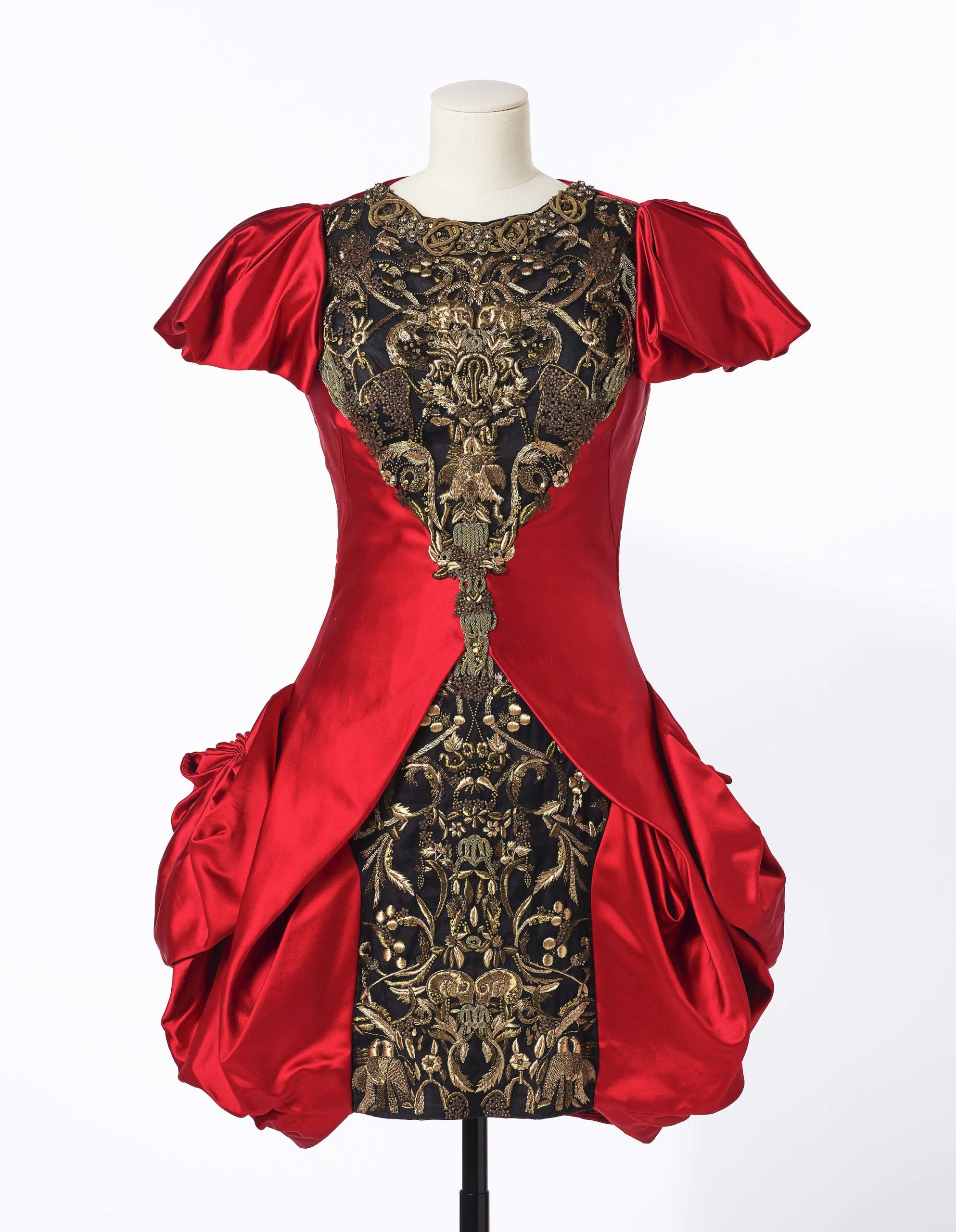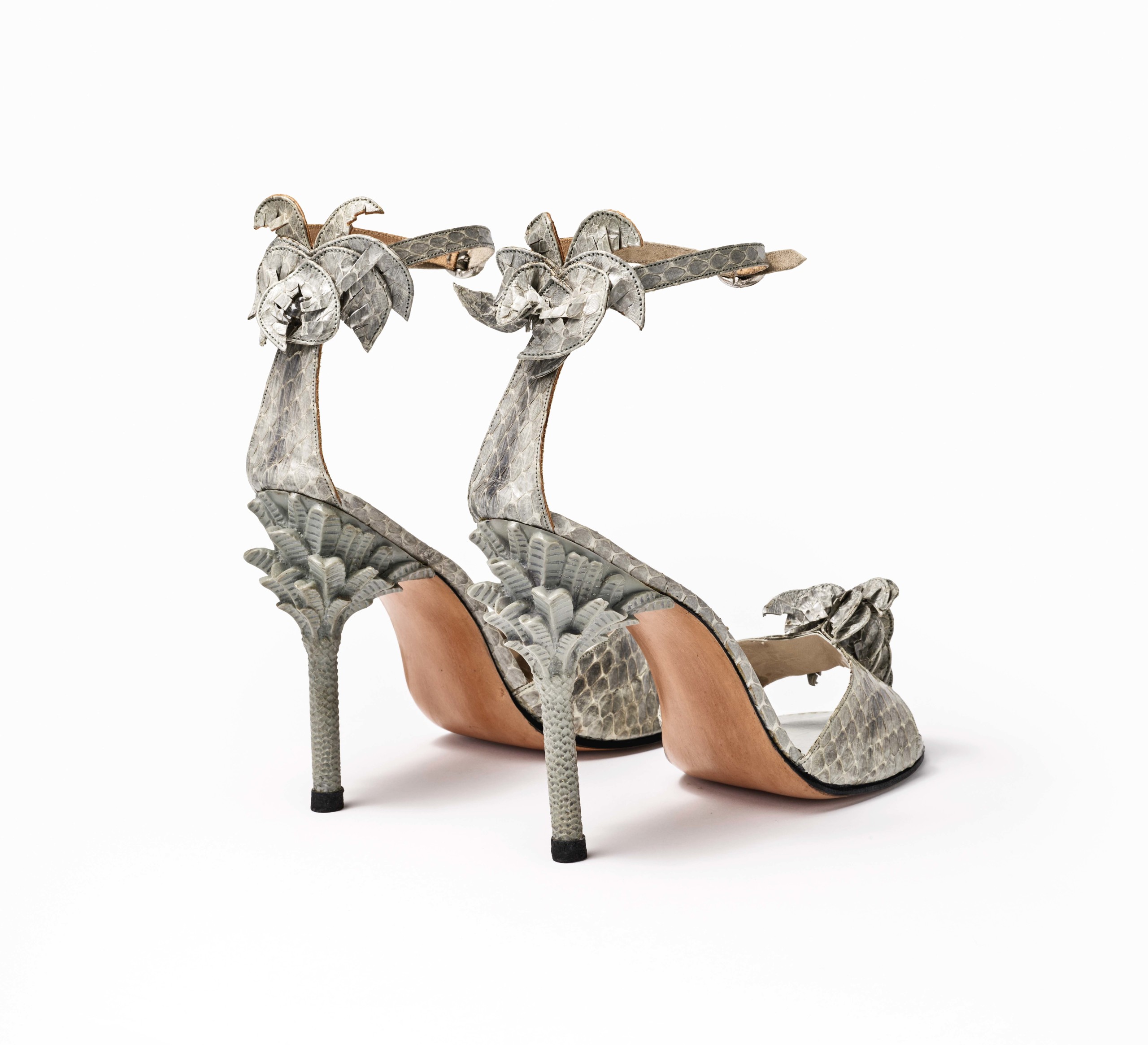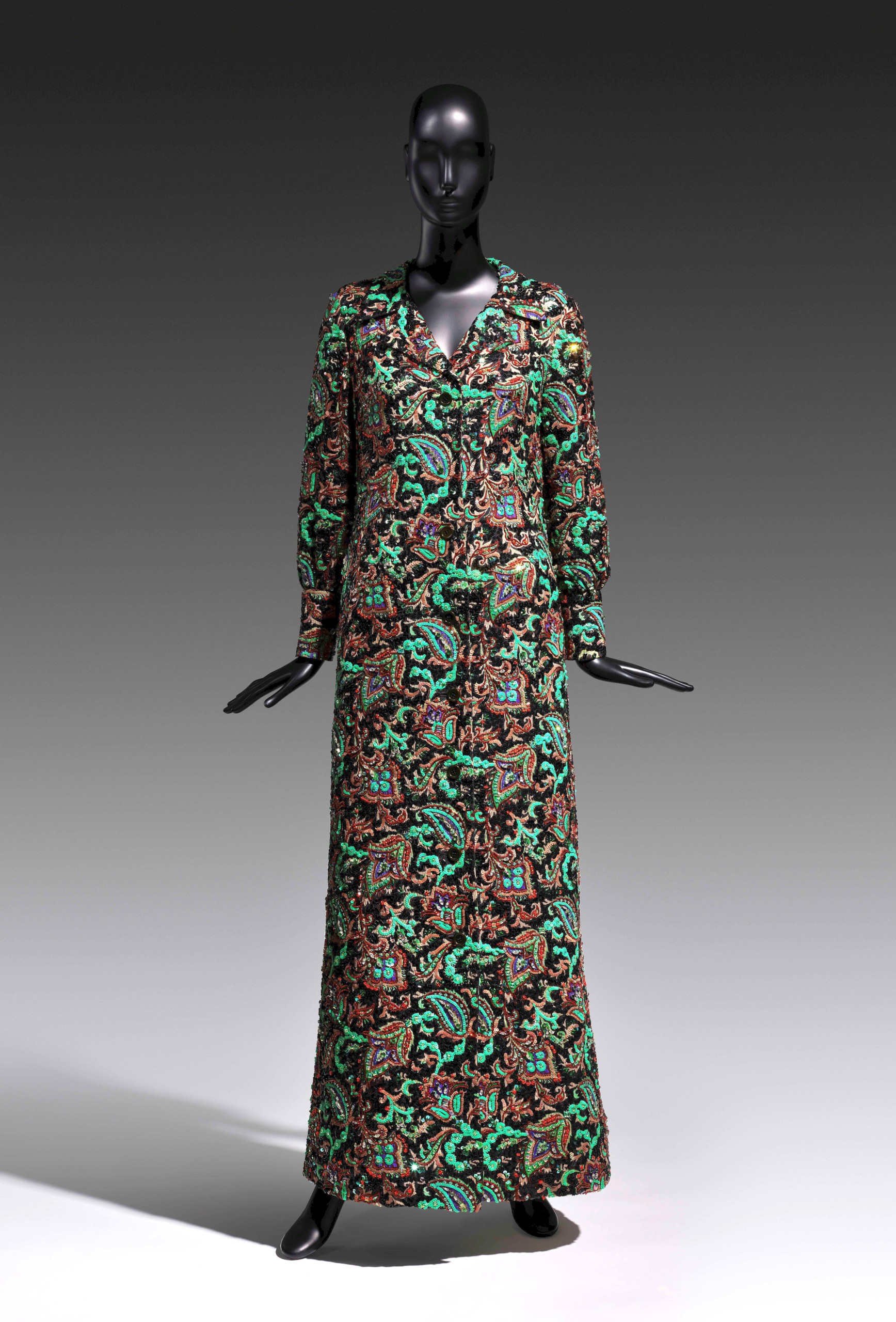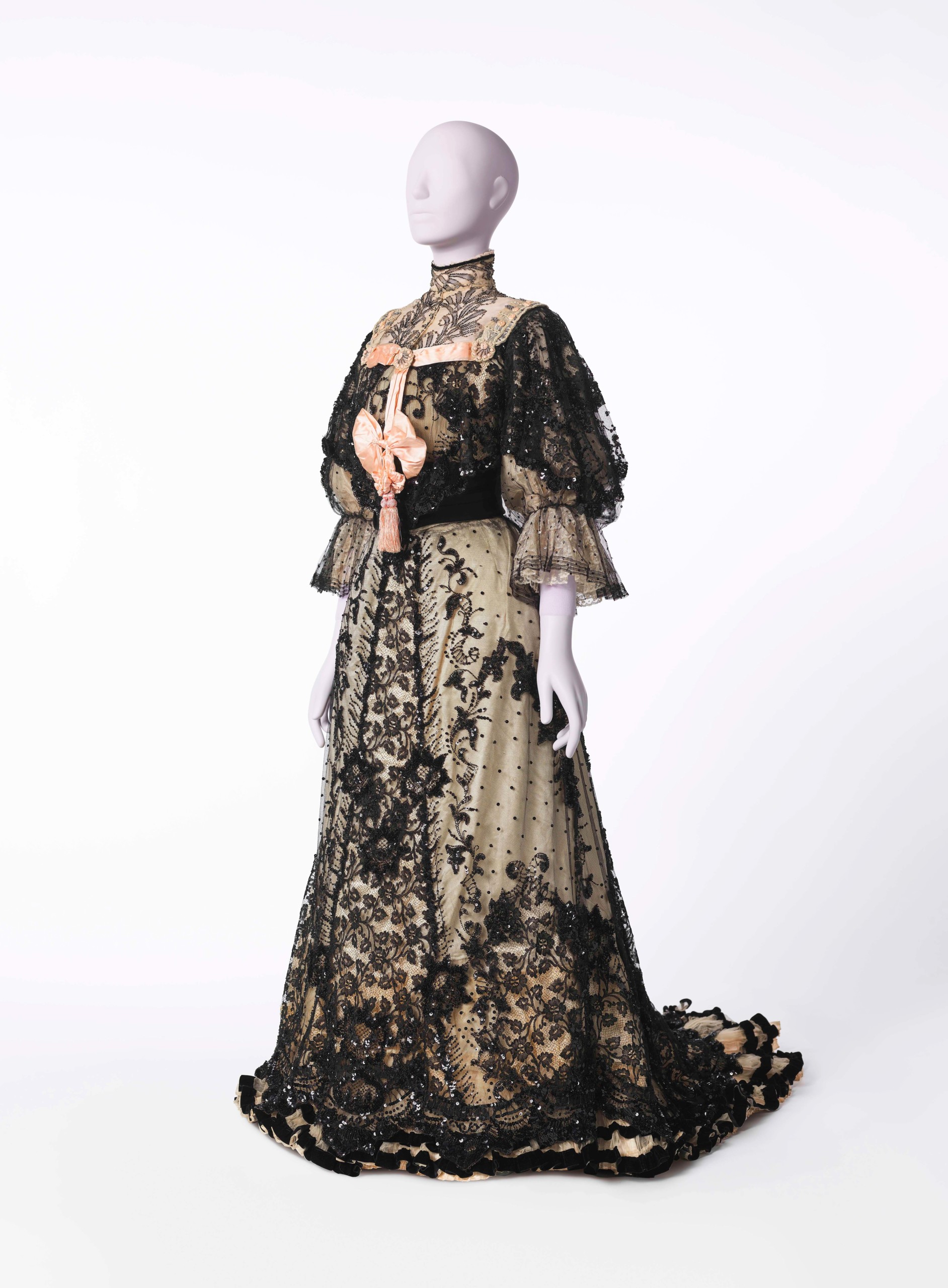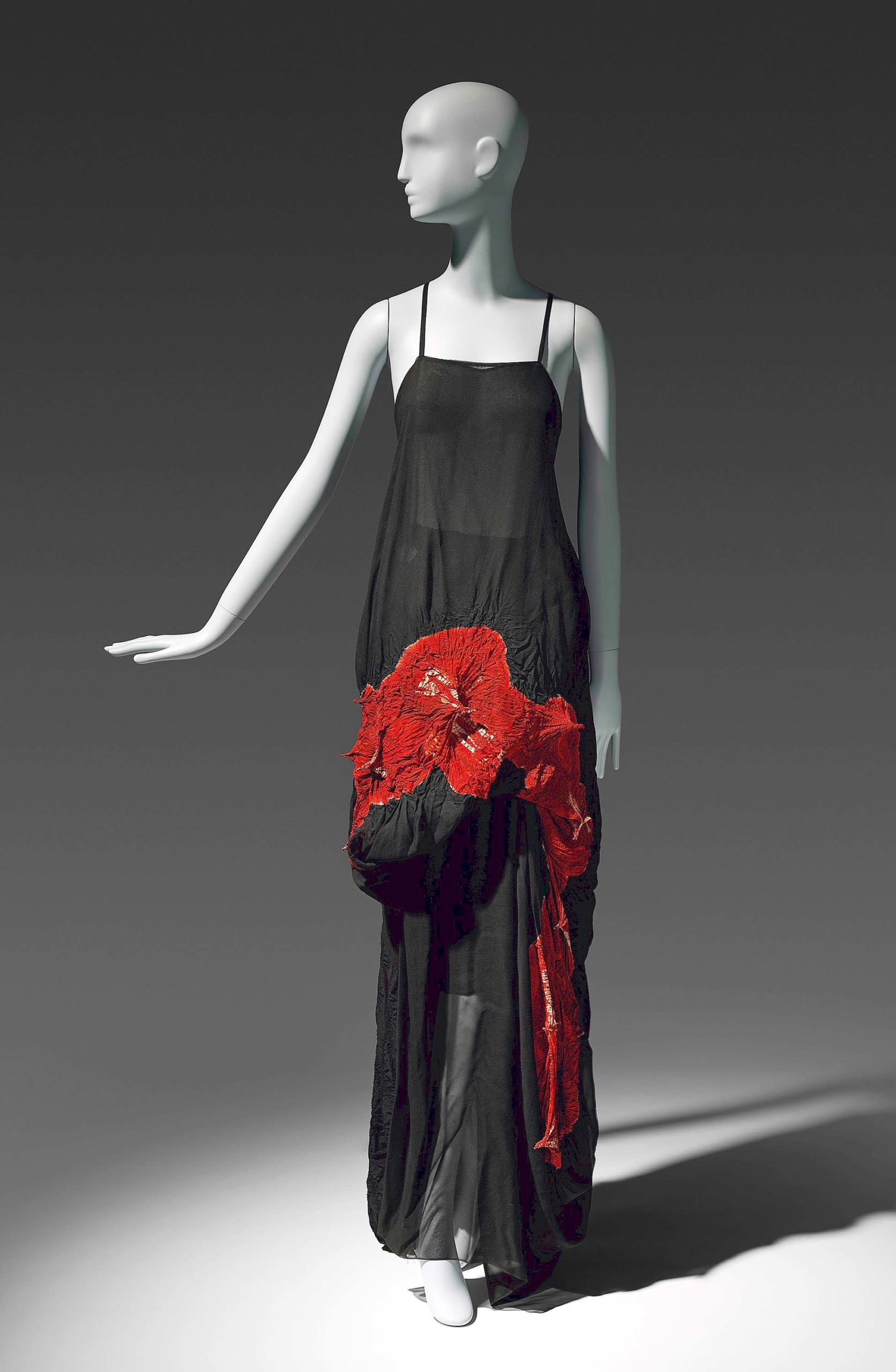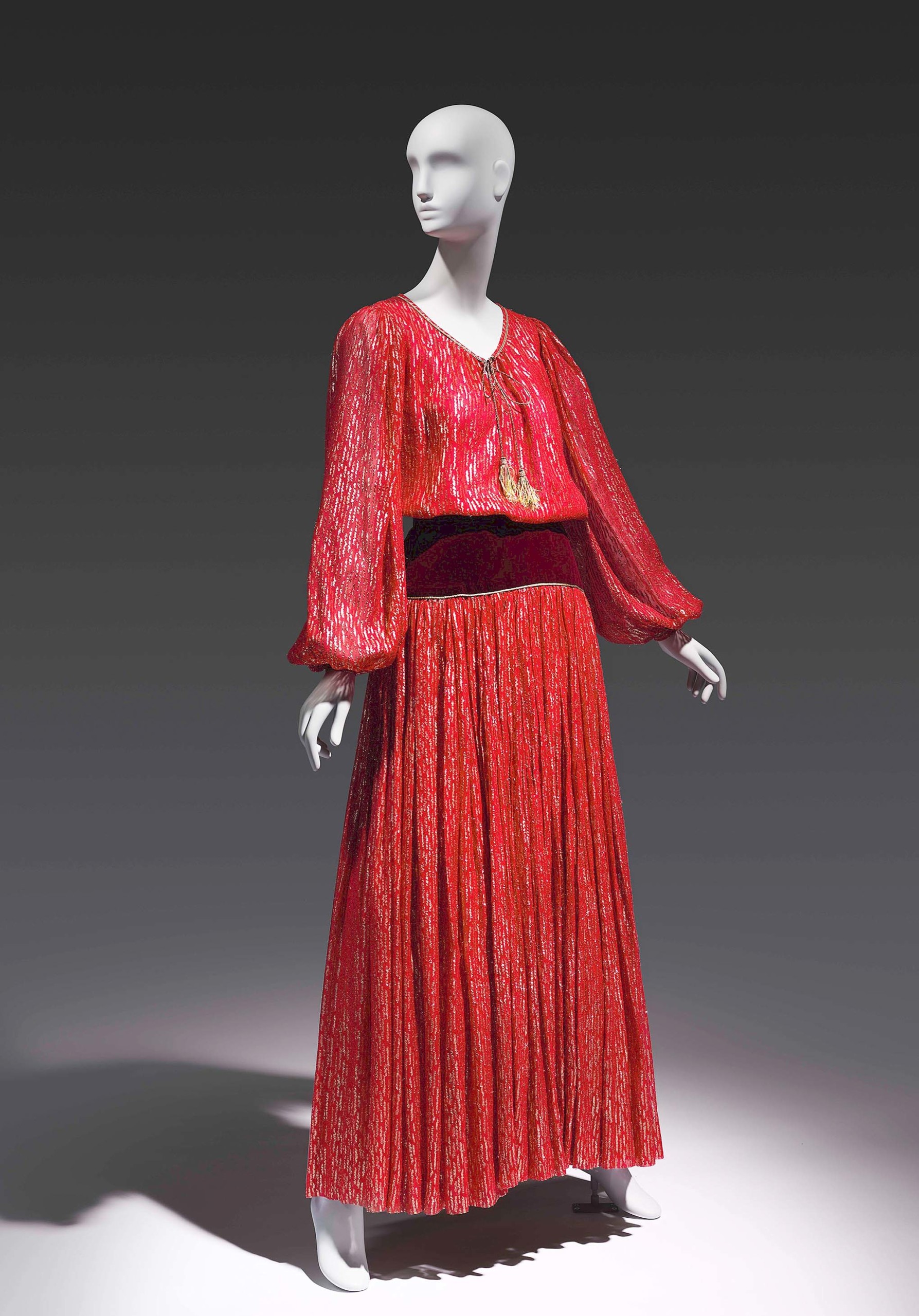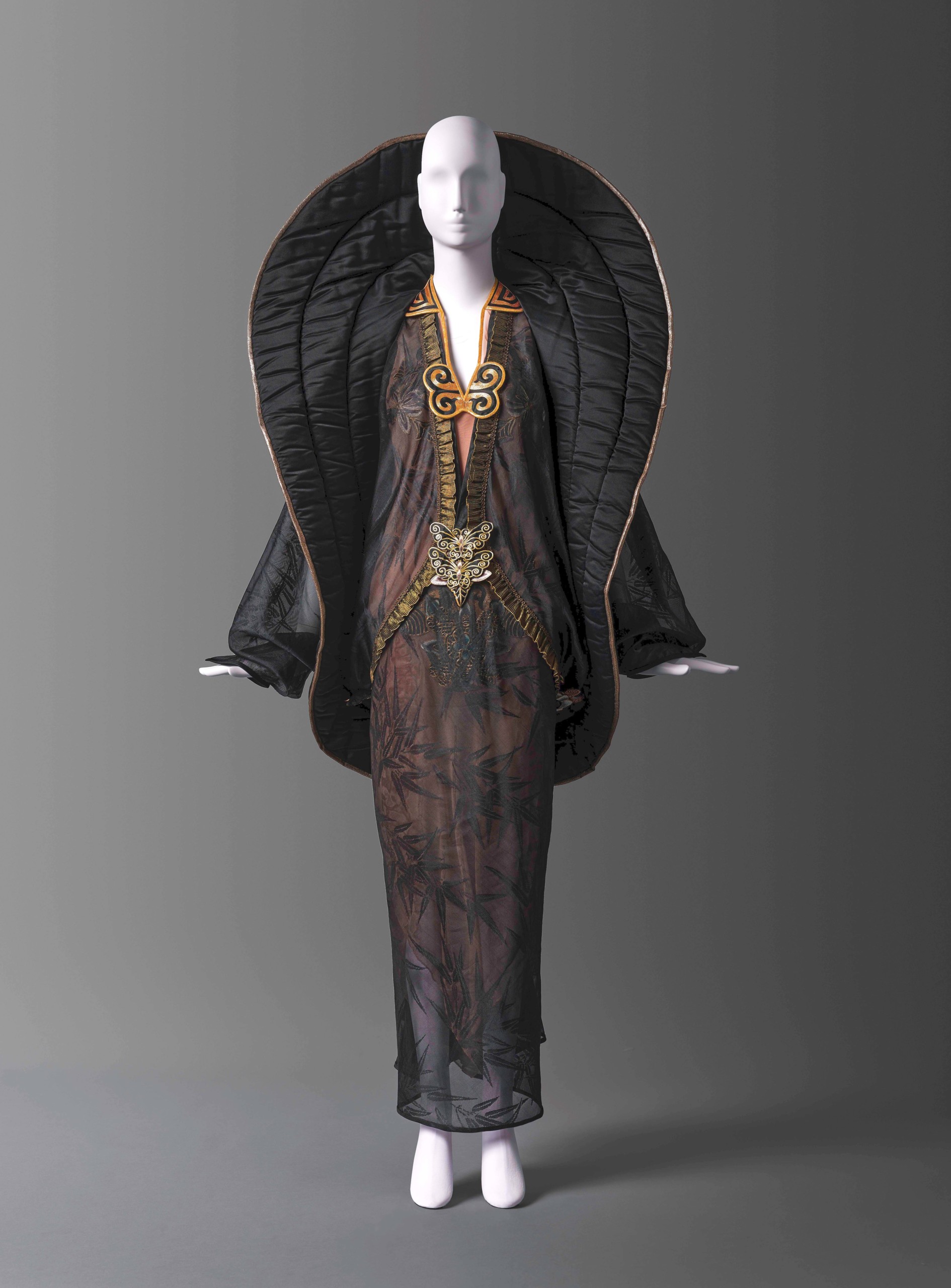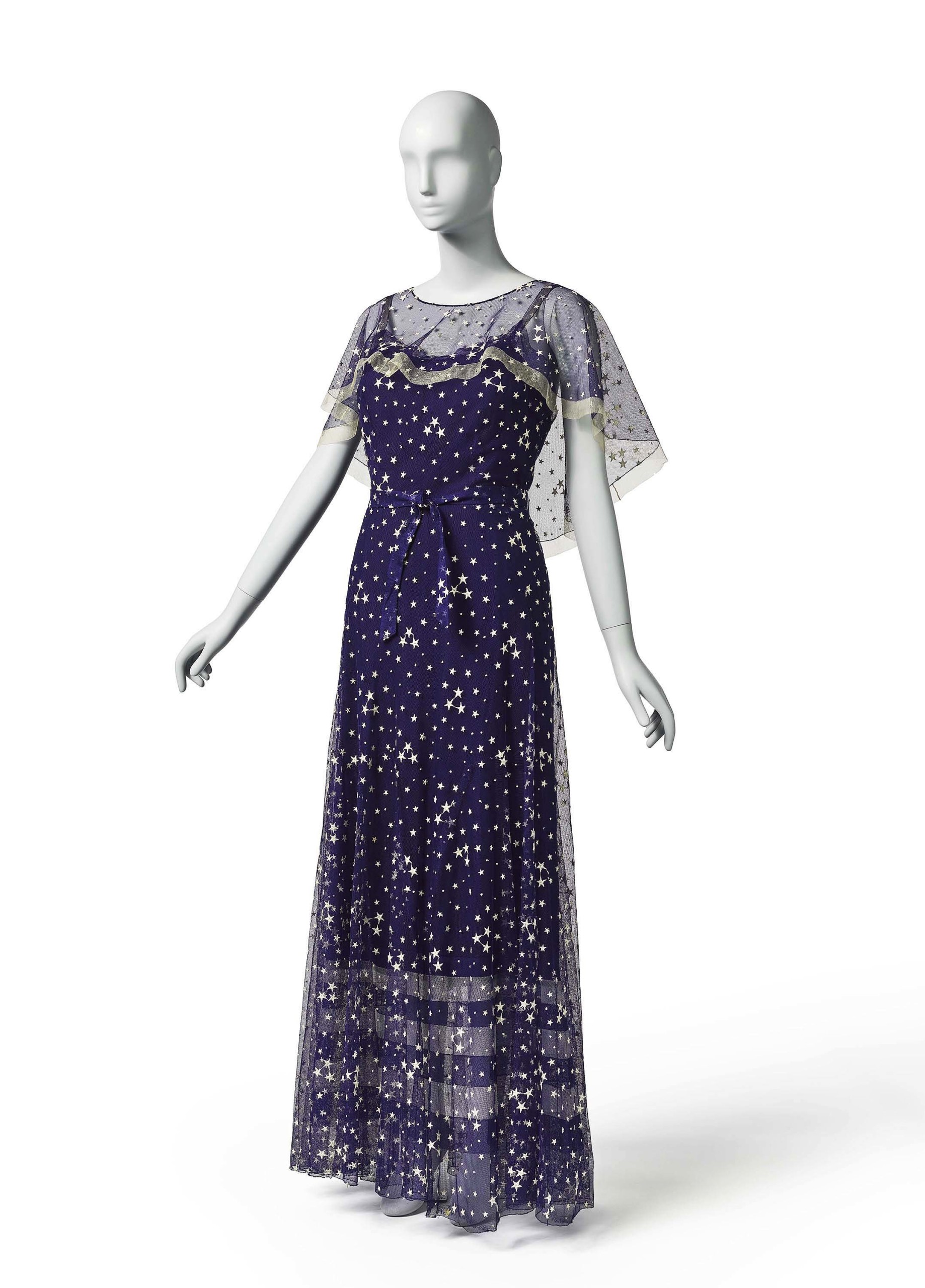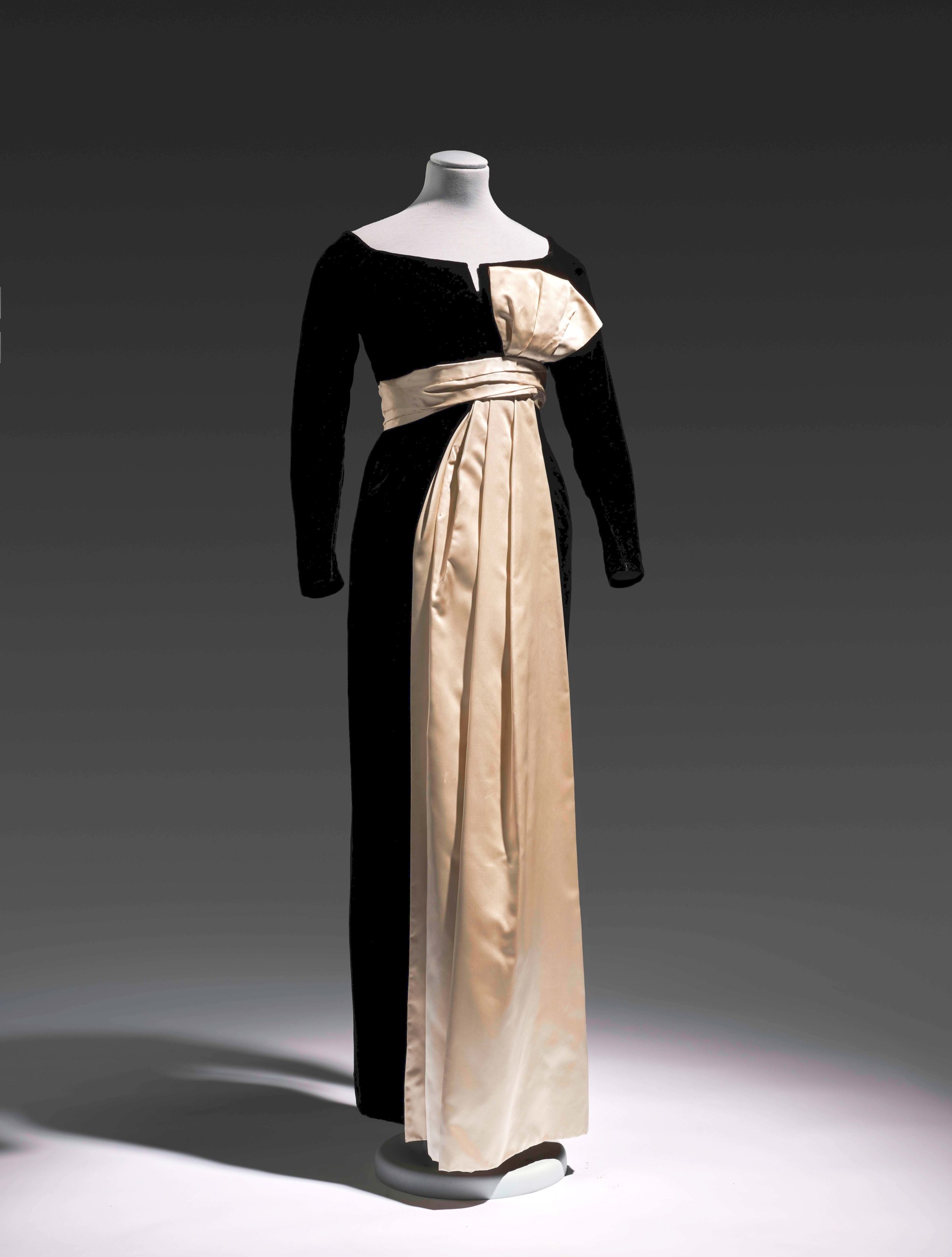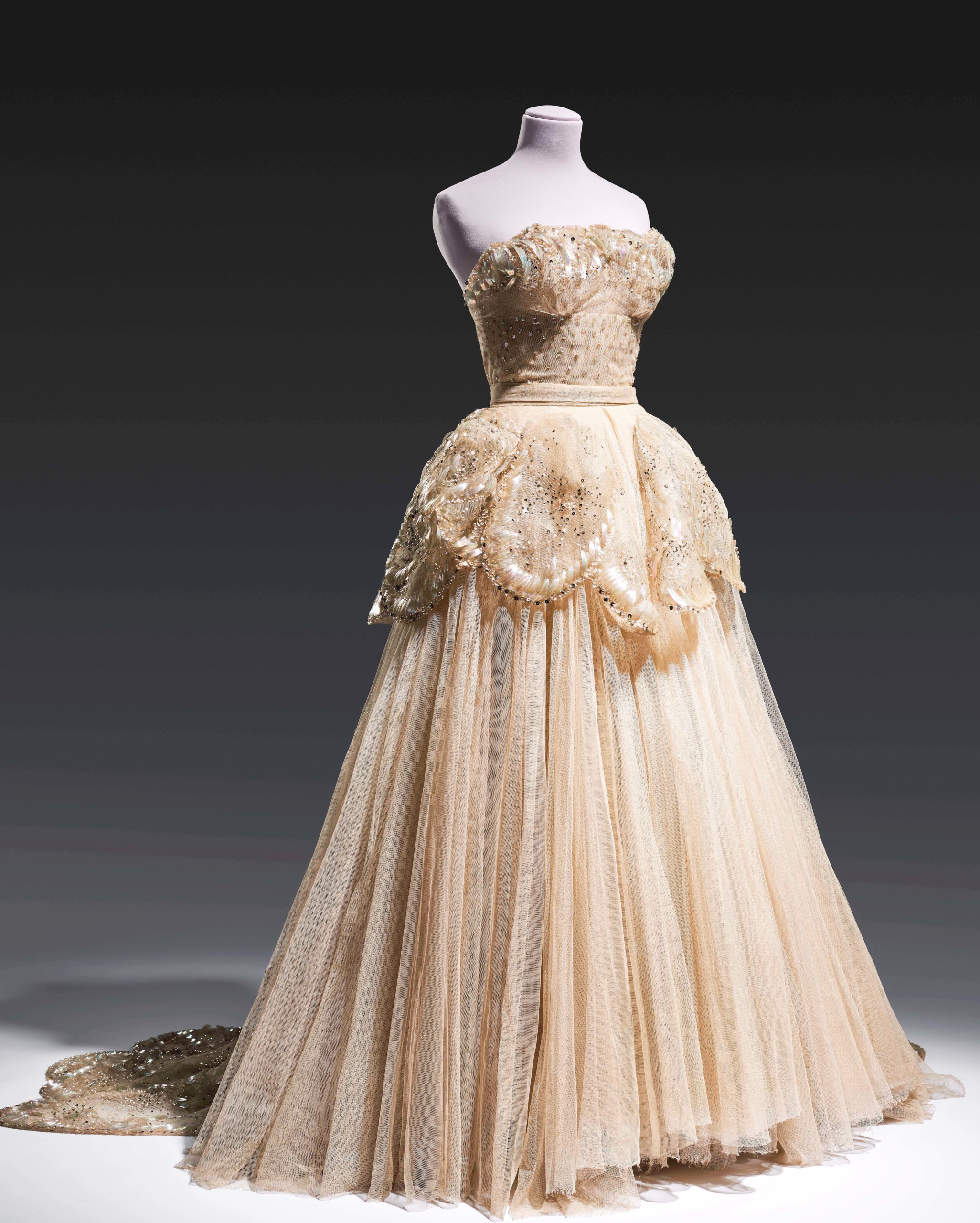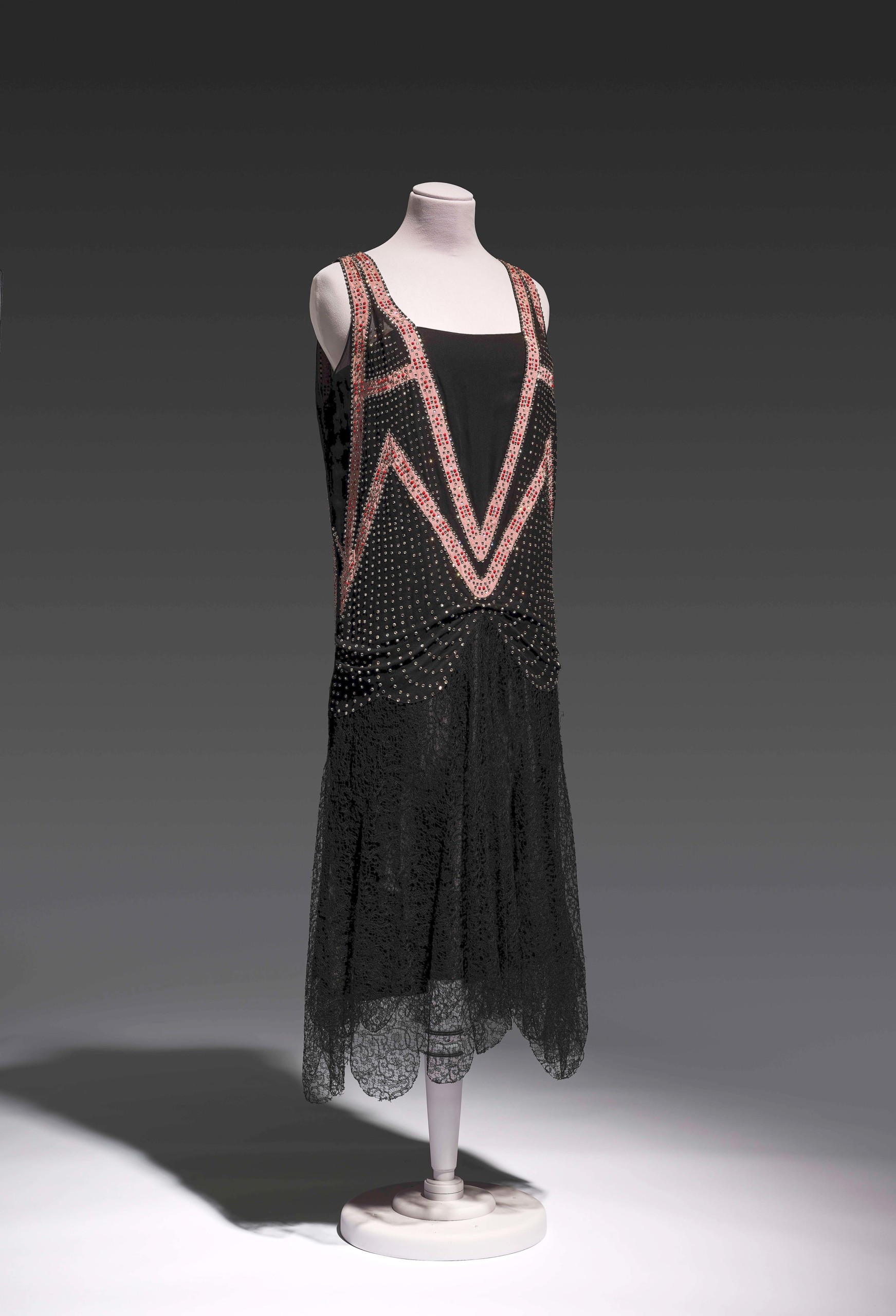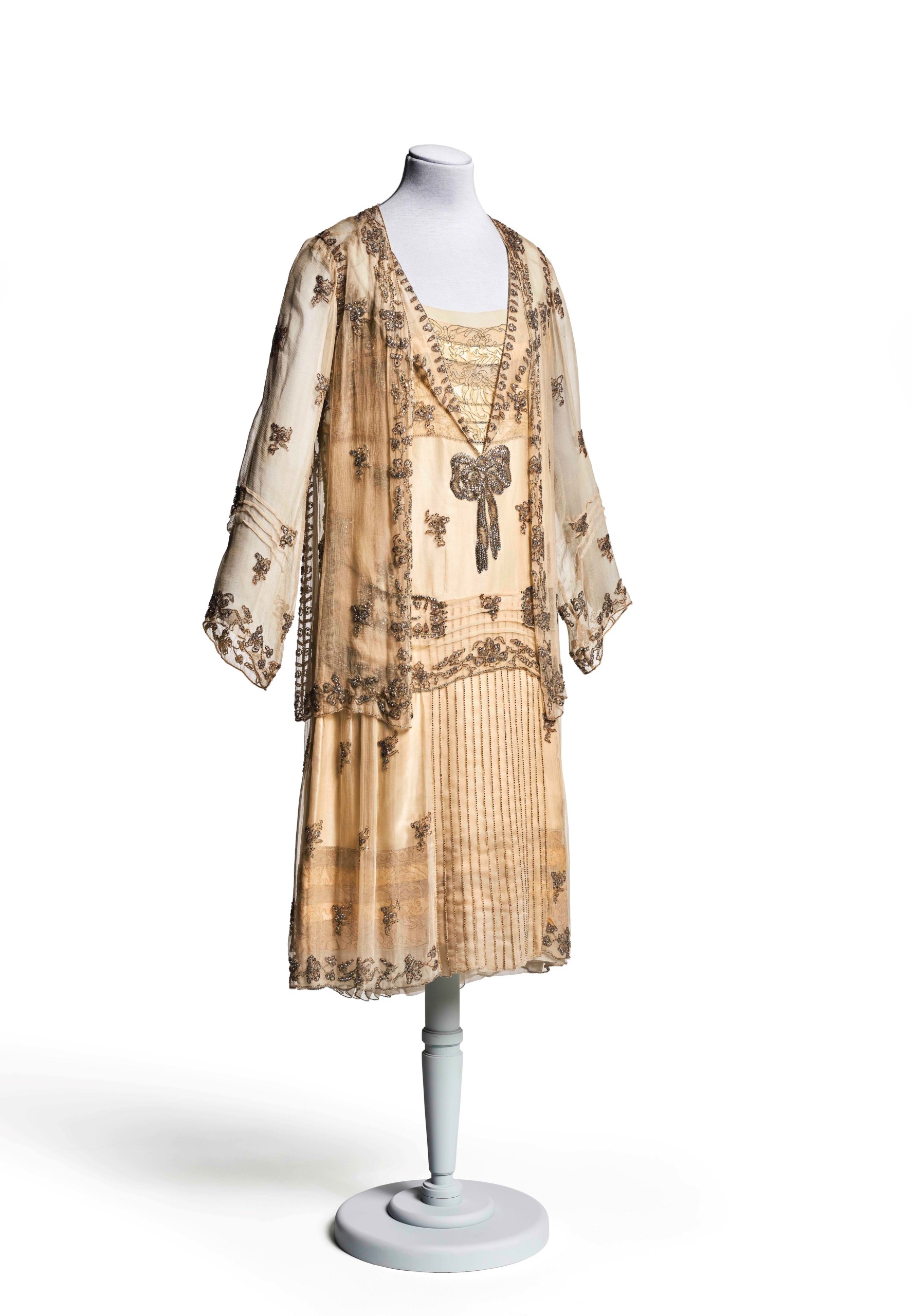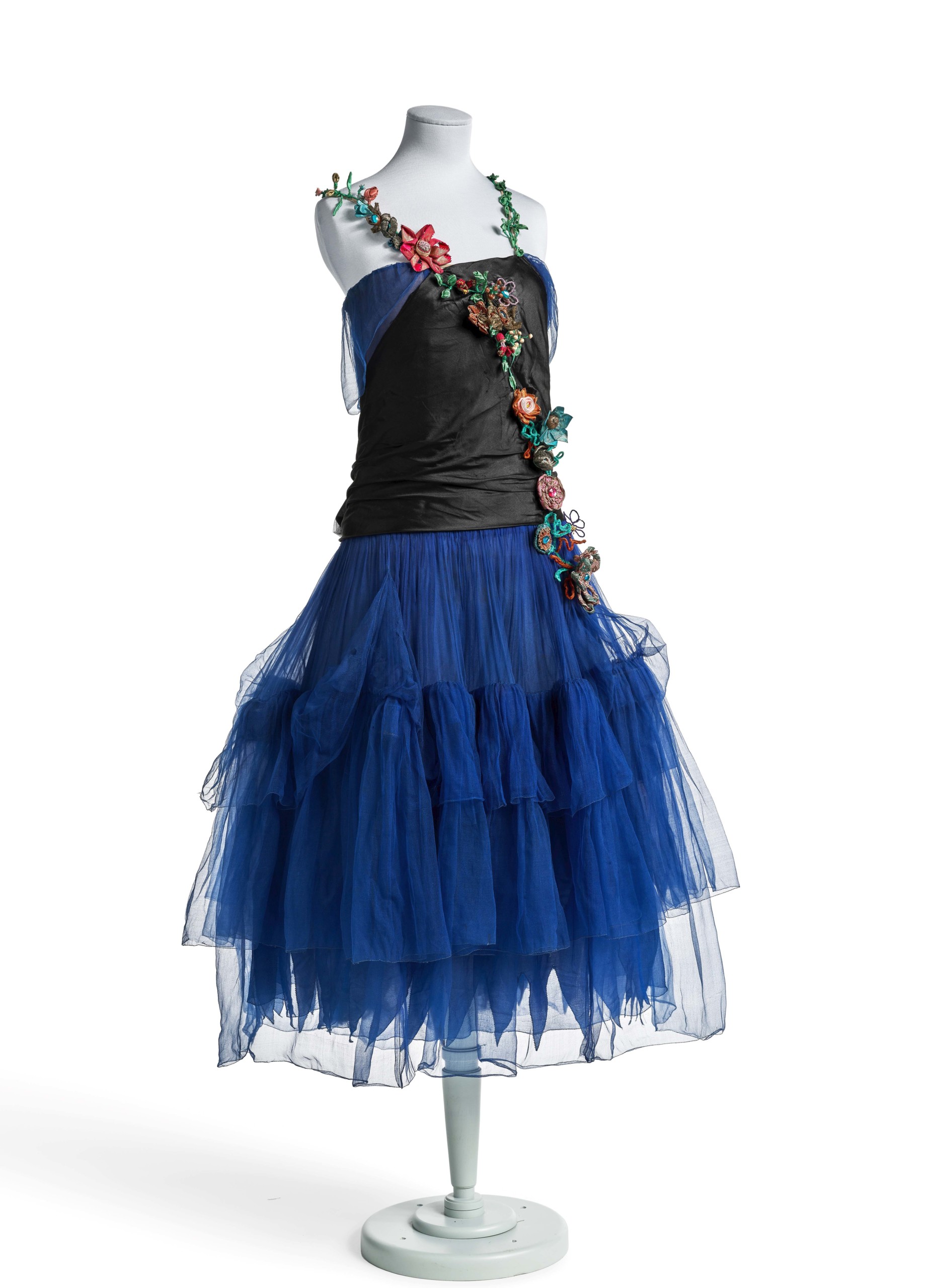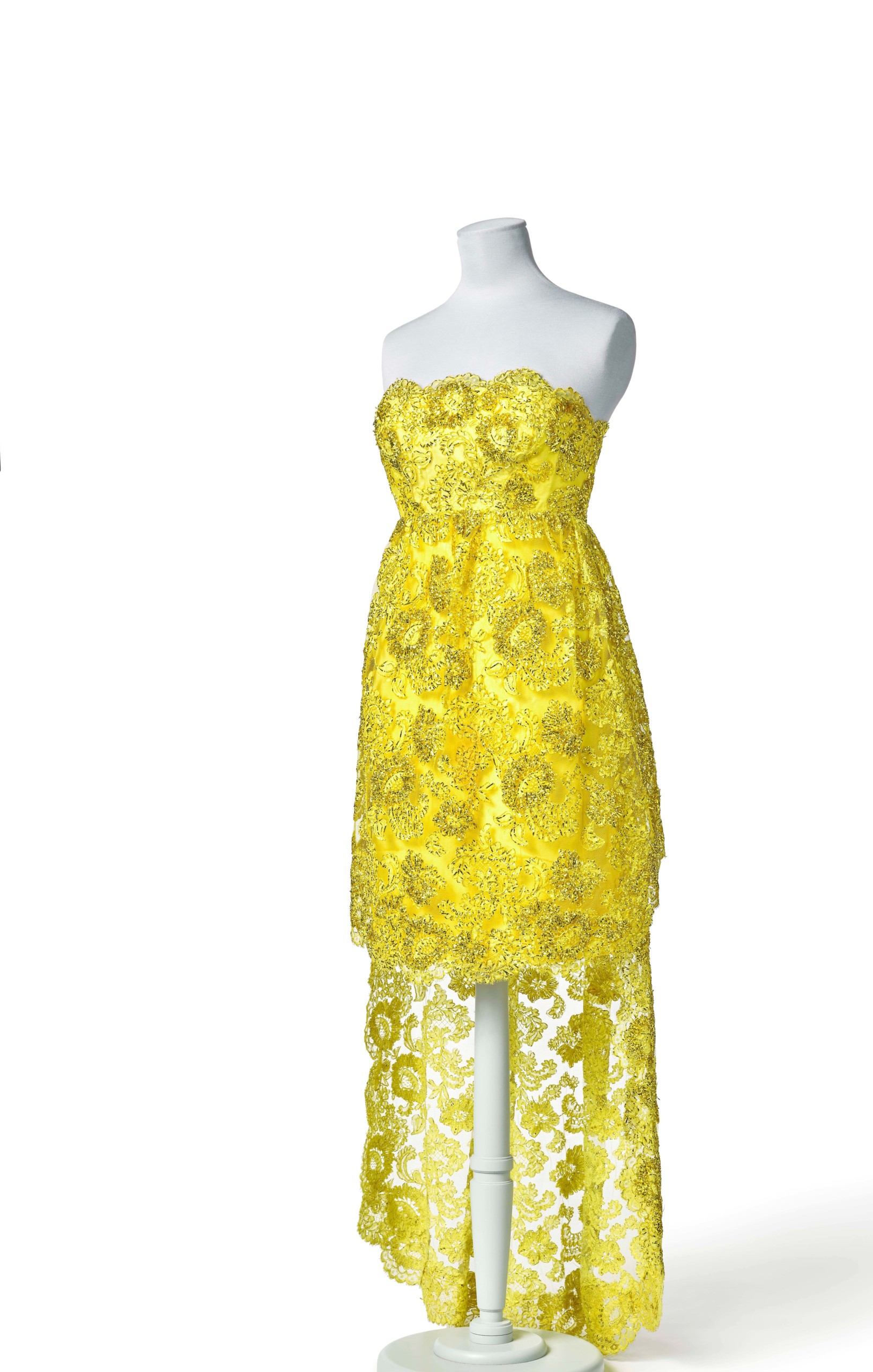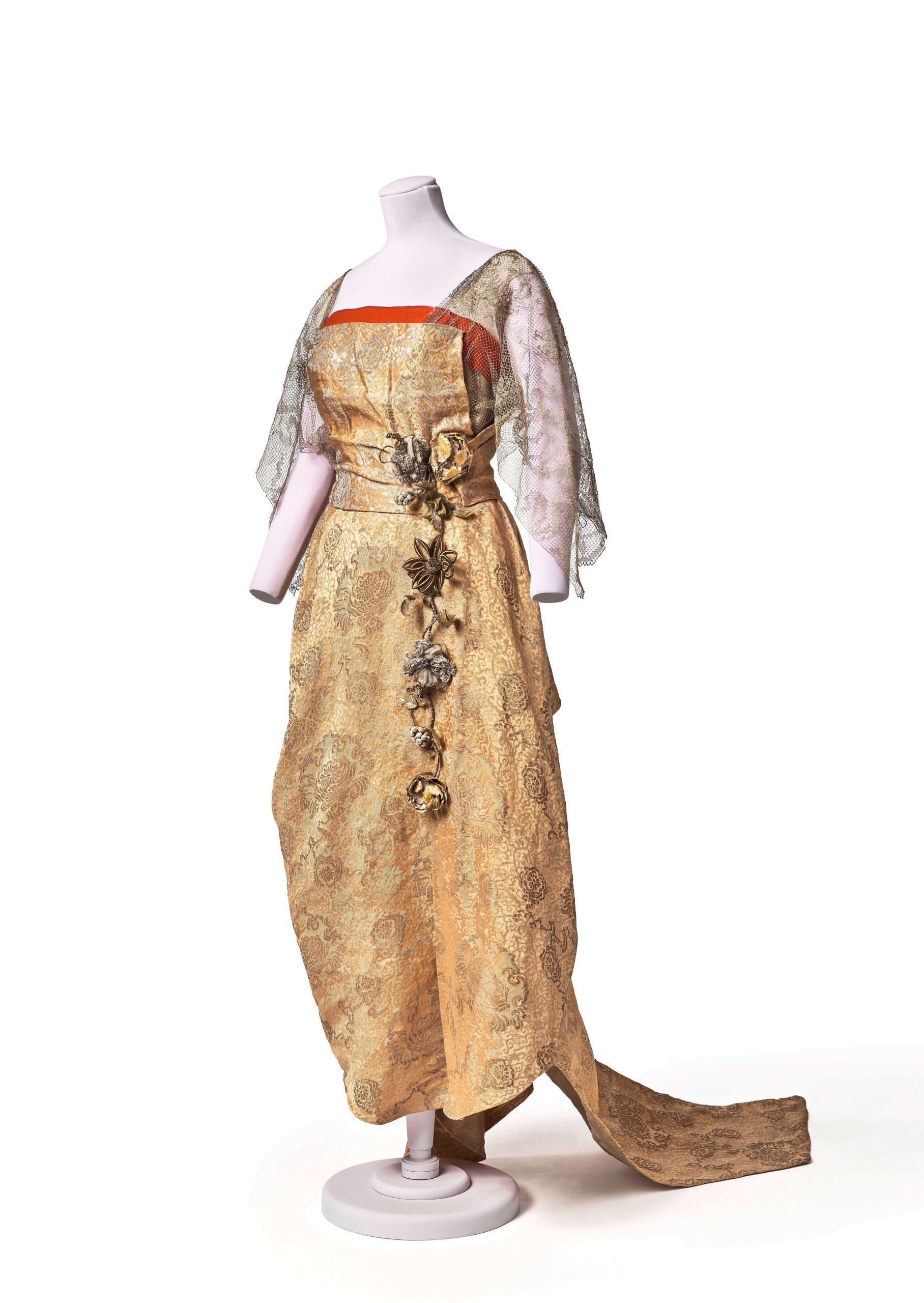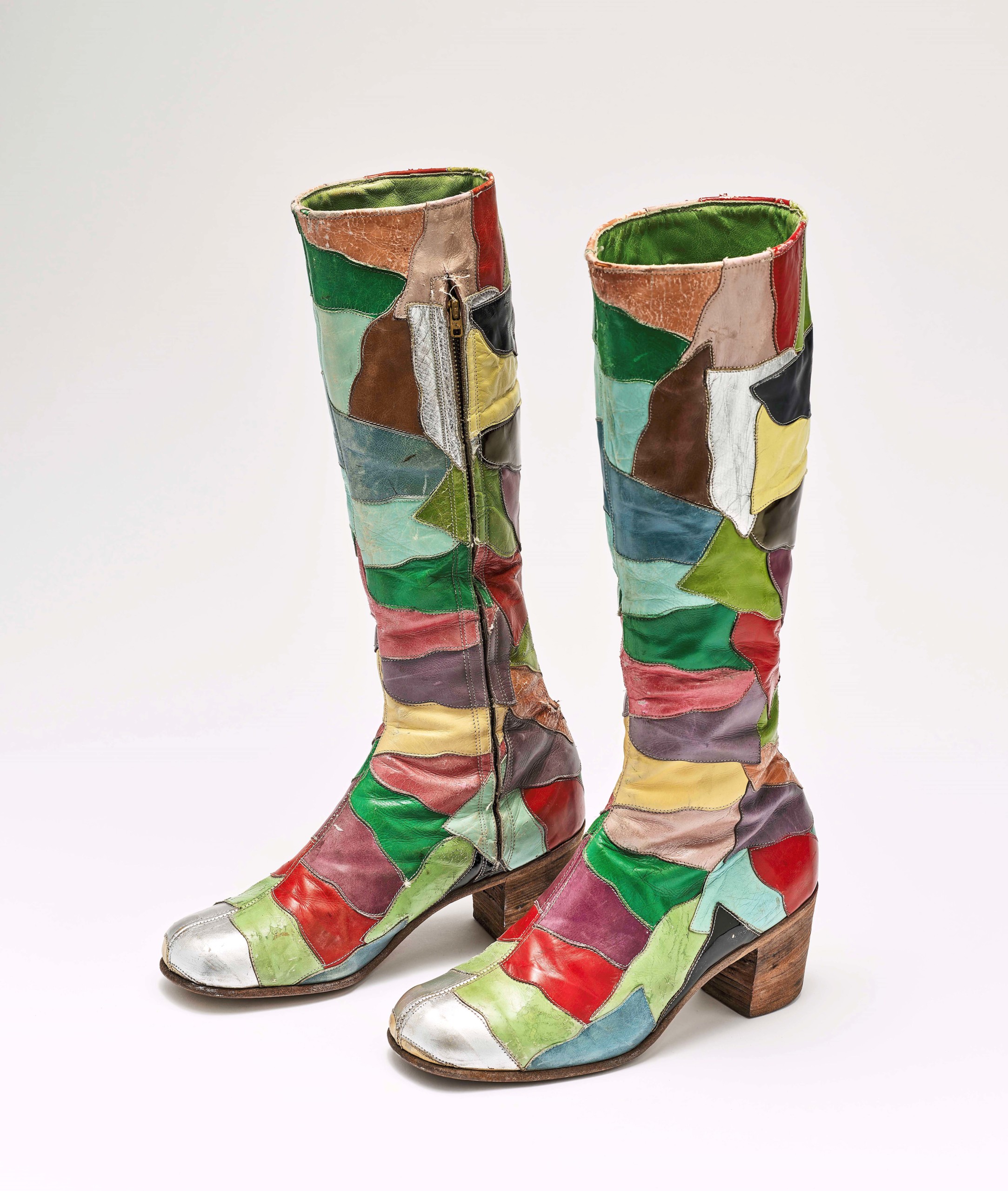
Pair of women’s boots, 1972, pieced leather. Fine Arts Museums of San Francisco, Gift of Constance Dee, Loni Dantzler, Margaret Gordon, Gretchen Turner and Ellen Harden, 2000. Randy Dodson photo, courtesy of the Fine Arts Museums of San Francisco.
By Laura Layfer
SAN FRANCISCO — Clothing in museum collections is often exhibited to portray a story about the maker or wearer rather than a relationship to region, especially from a region not particularly known as a fashion destination. “Fashioning San Francisco: A Century of Style,” currently on view at the de Young/Legion of Honor Fine Arts Museums of San Francisco, looks at the important history of its hometown over the last 100 years with more than 100 iconic fashion selections from its permanent collection. Designs from “off the runway” haute couture to ready-to-wear retail purchases, many from iconic but long-gone Bay Area-based department stores like I. Magnin, offers a study in how women’s fashion has enriched the fabric, so to speak, of a design discourse in San Francisco.
The de Young, founded in 1895, and the Legion of Honor, established in 1924, have always been repositories for clothing and textiles, respectively, gifted from local patrons. It was not until the 1980s that stewardship of these holdings took shape with the formation of a department and curatorial leadership. The exhibit opens with the year 1906, the city then in recovery mode from the aftermath of an earthquake and fire. A few years later, in 1915, the Panama-Pacific International Exposition, solidified their endeavors for growth and prosperity. Beginning with the Gold Rush era to the tech industry of today, the West Coast is famous for attracting visionaries. Additionally, the proximity to the Pacific Rim welcomed a diversity of cultures, communities and, ultimately, global commerce.
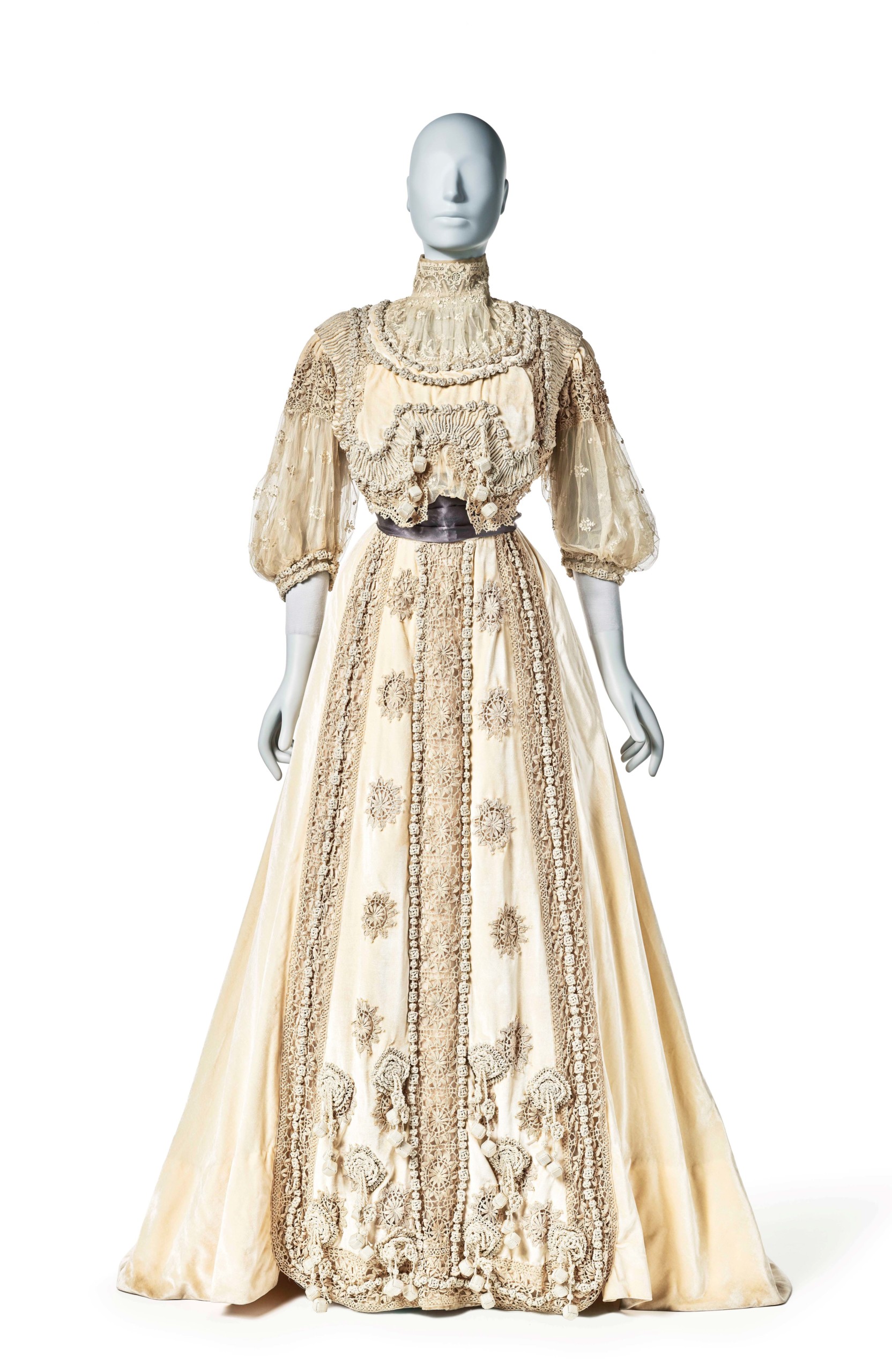
Ensemble: bodice and skirt by Callot Sœurs (France, active 1895-1937), circa 1908, with later alterations, silk pannė velvet; silk tulle with silk appliquė; silk cording; silk needle lace; silk plain weave; and silk satin weave sash with silk and metal-wrapped silk embroidery (satin and stem stitches, couching and French knots). Fine Arts Museums of San Francisco, Gift of the Provident Securities Company. Randy Dodson photo, courtesy of the Fine Arts Museums of San Francisco.
“Elegance to Eccentricity,” comments Laura L. Camerlengo, the curator in charge of Costume and Textile Arts at the Fine Arts Museums of San Francisco, of the place dubbed a “Paris of the West,” in a 1930s Vogue magazine reference. Subsequently, a large number of French émigrés once settled in San Francisco, increasing demand and accessibility to European goods. Well-known shops became sanctuaries for sophisticated clientele looking to buy the latest in American and imported labels. City of Paris, a shop that had an Eiffel Tower replica in its rotunda, and the multi-level luxurious retail venue, I. Magnin, were each centrally located near Union Square. In her research, Camerlengo learned that, after World War II, Parisian dressmakers actually sent their collections to San Francisco vendors to preview ahead of those in New York City.
Highlights throughout the galleries emphasize the quality and craftsmanship revered by the city’s patrons. For example, a Callot Sœurs evening dress, dated to 1915, of lamé, lace and silk with a garland-like belt draped at waist, evokes the lavish and exotic of fanciful silhouettes. There are two haute couture gowns from the Christian Dior, Fall/Winter 1949 collection, Junon and Venus, known as sister designs, purchased by I. Magnin that same year but surprisingly only for store display. Almost immediately they were then promptly donated to the de Young. This act alone reveals impressive foresight on the part of the retailer and the status appropriated to fashion, way before it was a more common practice to conserve and observe clothing as museum-worthy works of art.
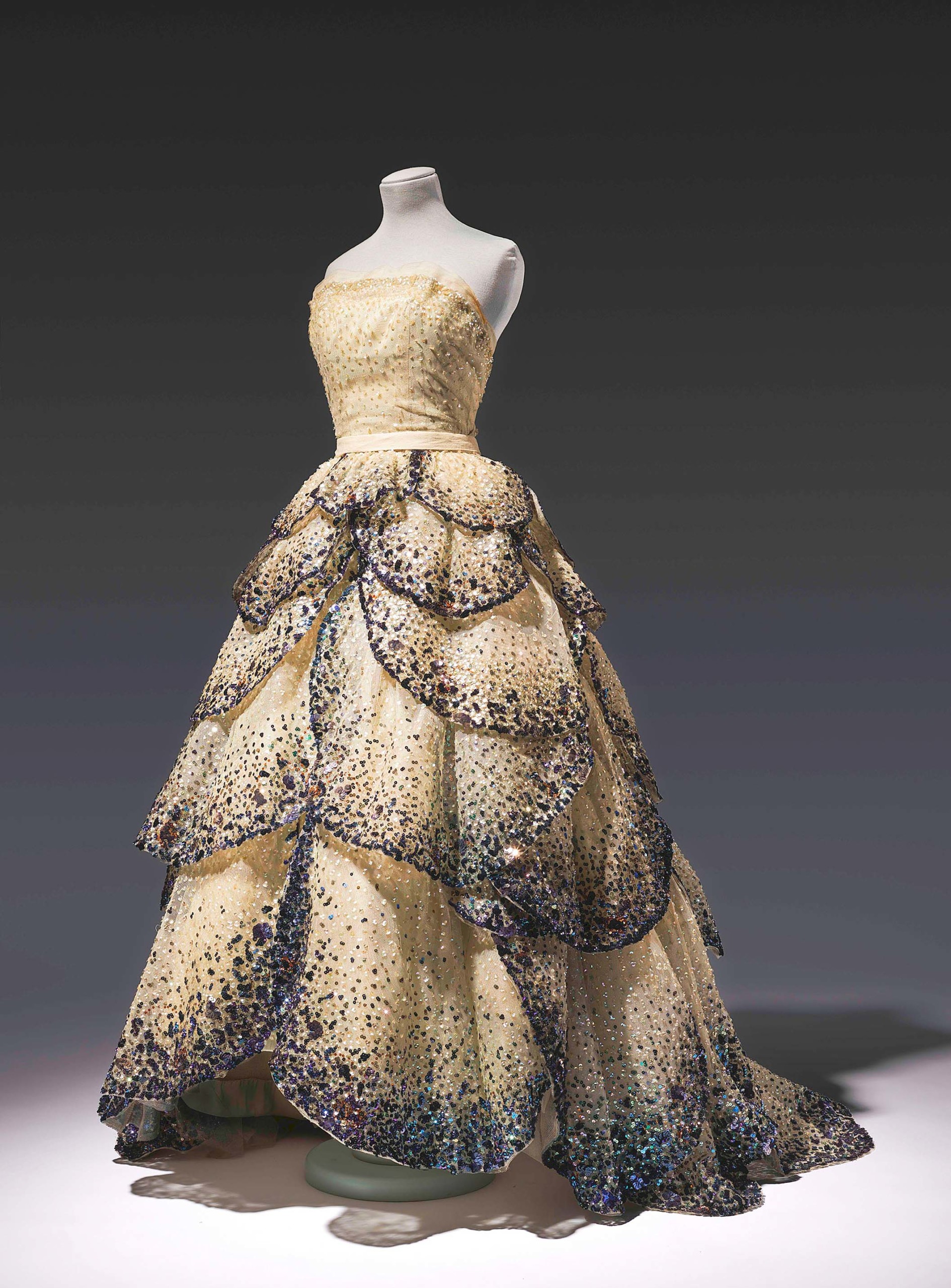
Evening gown by Christian Dior (French, 1905-1957). House of Dior (French, est. 1947). Junon; Fall/Winter 1949 Haute Couture, silk bobbin net, silk gros de Tours, plastic sequins, gelatin sequins and nylon horsehair. Fine Arts Museums of San Francisco, Gift of I. Magnin & Company. Randy Dodson photo, courtesy of the Fine Arts Museums of San Francisco.
Understanding the way innovative use of materials and style had potential to mark progress is one reason Asian designers, in the later part of the Twentieth Century, found ample opportunities to make their name in San Francisco. Rei Kawakubo, Junya Watanabe and Kaisik Wong are just a few on display and noted for their avant-garde aesthetics. “They pushed the boundaries of the body for self-expression,” says Camerlengo.
In total, more than 50 designers are represented, including pieces by Vivienne Westwood and Alexander McQueen, citing the contributions of the British contingency in favored fashions. There are also sections divided by type like “the little black dress” with versions by Valentino Garavani, Oscar de la Renta and Karl Lagerfeld. Nearby another portion of the galleries discusses “power suits” as a segue to honoring leaders in business, politics and public affairs in the city. An area devoted to shoes — so many in pristine condition because “we are not really a walking city!,” laughs Camerlengo — features a pair of bohemian-style patchwork boots that are perhaps the perfect homage to the way a vast history of fashion melded together so seamlessly in this metropolis.
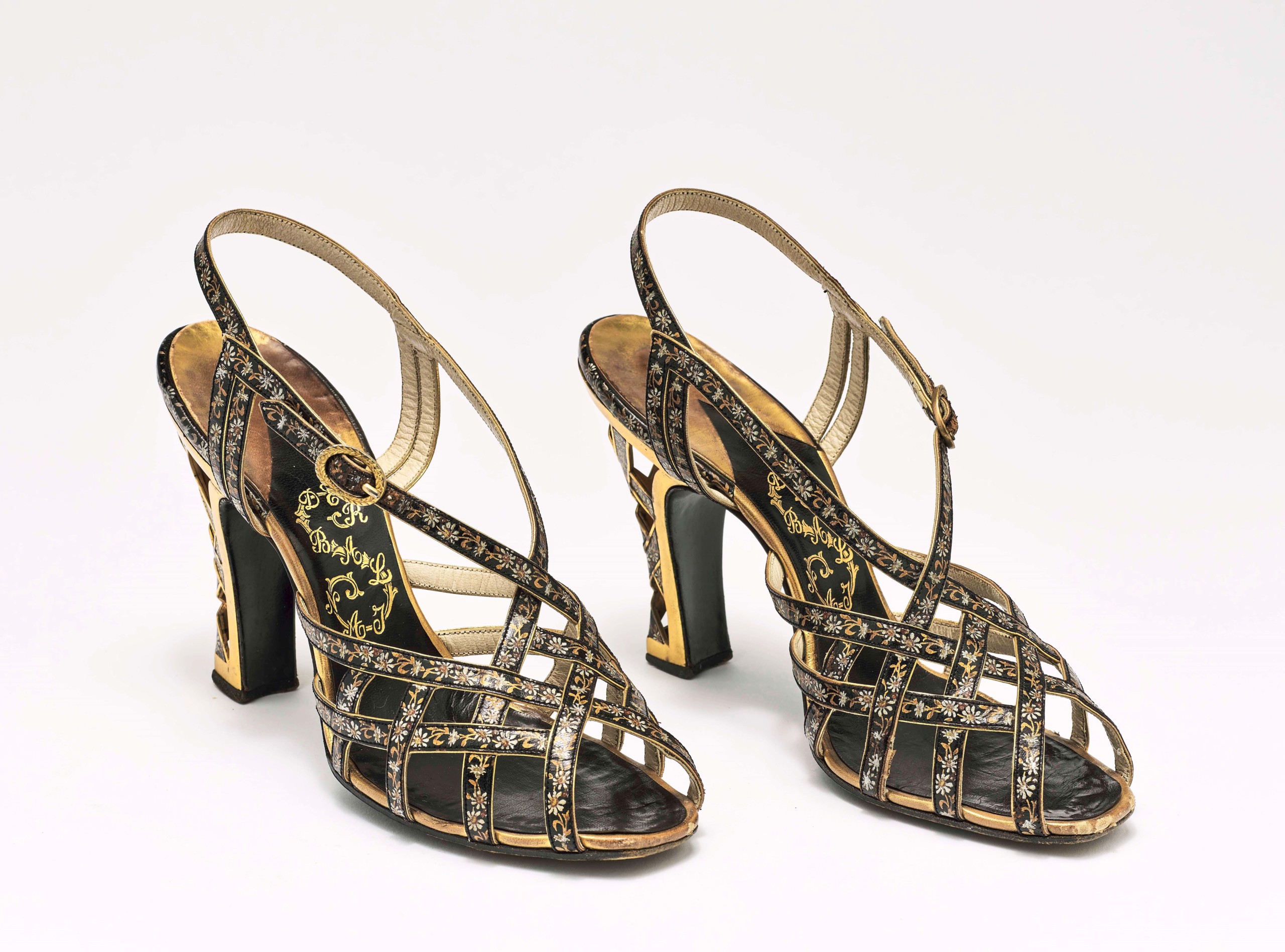
Pair of women’s shoes by Sarkis Der Balian, (French, 1910-1996, active 1929-1995) 1955, leather. Fine Arts Museums of San Francisco, Gift of Anita Naz Mardikian, 2008. Randy Dodson photo, courtesy of the Fine Arts Museums of San Francisco.
“We thought a lot about the history of philanthropy, including the way museum credit lines typically read ‘Mr and Mrs,’ we wanted to celebrate the women donors,” says Camerlengo. She elaborates on the alternatives to monetary giving that provided resources to the exhibit. “These designs were from groups of women who were suffragists, poets and responsible for institutions like our library system — there are so many layers to the public presence and contributions they made.” By showing up and dressing up, it becomes clear how fashion was used as a tool and a force for change when worn by so many of the female figures in the city.
An interactive augmented reality installation, in partnership with Snap Inc., will allow visitors to “virtually” try on some of the ensembles themselves. It is the first of its kind to be offered at a US museum as AR “magic” helps bring these pieces of the past to new generations, their ideas and ingenuity.
“There are two key aspects of this exhibition that I think make it so special,” remarks Camerlengo. “First, the opportunity to investigate artwork within our own collection and collaborate with the conservation team for a methodical study of each object. And the second, is simply the civic pride that manifests when seeing it all in unity. The exhibition is a ‘thank you’ to our donors.”
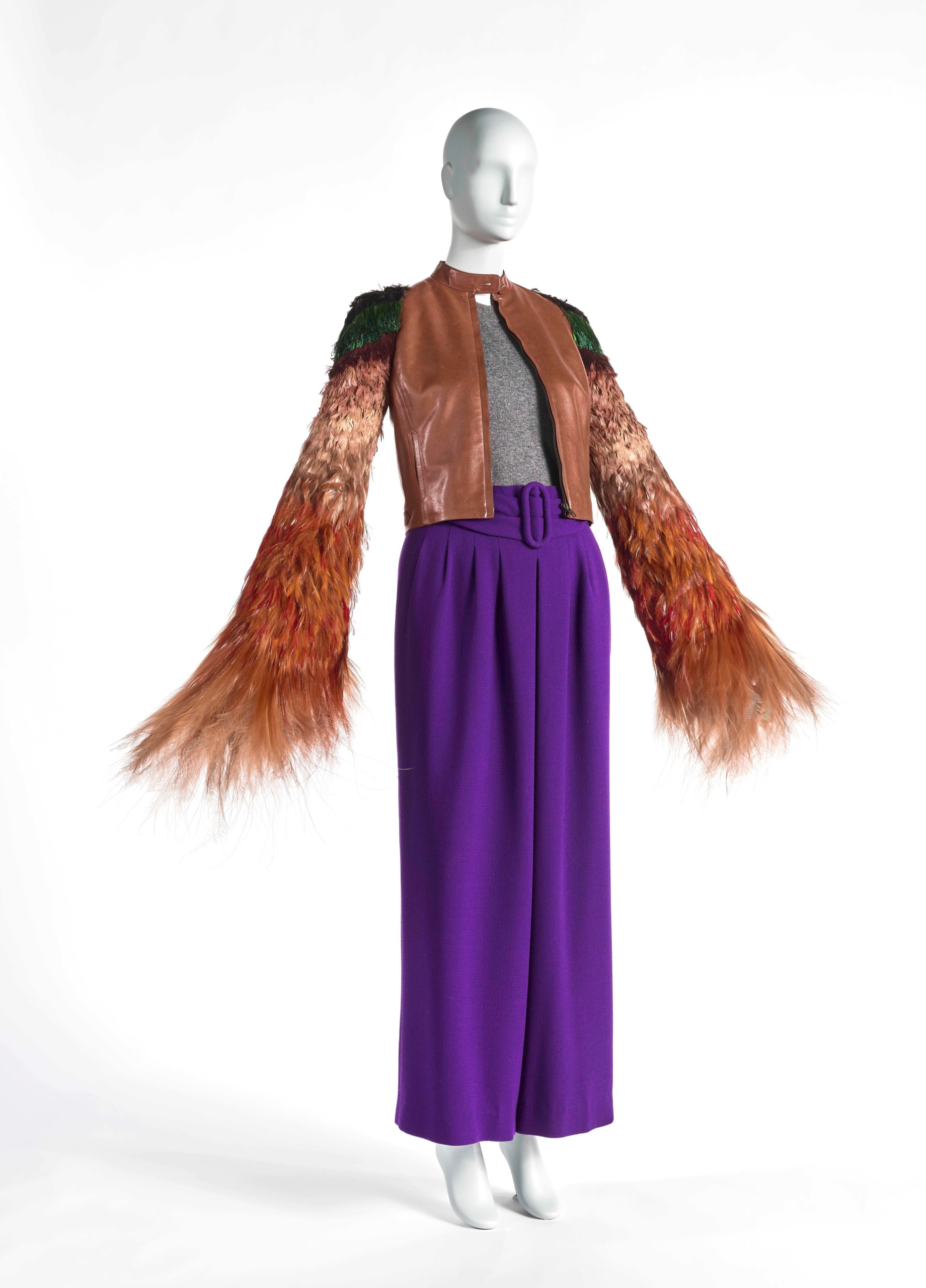
Jacket by Jean Paul Gaultier (French, 1952) (Designer), 1998, leather with peacock feathers, dyed bird-of-paradise feathers, dyed other feathers, silk plain weave lining. Fine Arts Museums of San Francisco, Gift of Mrs John N. Rosekrans Jr, 2012. Randy Dodson photo, courtesy of the Fine Arts Museums of San Francisco.
“Fashioning San Francisco: A Century of Style” will be on view at the de Young through August 11.
The de Young is in Golden Gate Park, at 50 Hagiwara Tea Garden Drive. For more information www.famsf.org or 415-750-3600.

